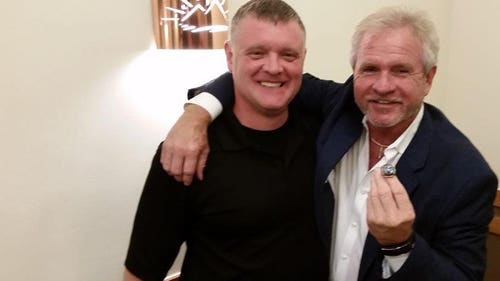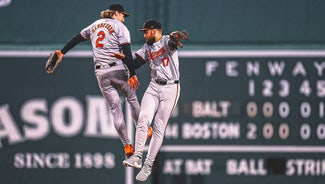
Why the Texas Rangers spent $300 million on a new rotation
Last winter, the Texas Rangers committed more than $500 million in free agency, most of it to infielders Corey Seager and Marcus Semien. For a franchise that had spent the past half-decade toiling in irrelevance, their half-billion-dollar spending spree was a statement of intent.
The Rangers wanted to contend immediately and were willing to dish out the money necessary to make it happen.
There proved to be one big problem with that strategy: Hitting is only half of baseball. Texas’ big-money hitters flourished in Year 1, but an abysmal performance from the pitching staff meant the 2022 Rangers won only 68 games. That wasn’t what ownership had in mind when they opened the checkbook, and so longtime president of baseball operations Jon Daniels got the heave-ho in August.
This offseason, new Rangers head honcho Chris Young has done everything in his power to rectify his team’s Swiss-cheese rotation. When the ‘22 season ended, the projected ‘23 starting five was: (1) Jon Gray, (2) Dane Dunning, (3) Glenn Otto, (4) Cole Ragans and (5) Spencer Howard. Not exactly a group you make T-shirts for.
Now, after five transactions and almost $300 million committed — that doesn't include Gray signing last offseason for $56 million — the rotation is (1) Jacob deGrom, (2) Nathan Eovaldi, (3) Martín Pérez, (4) Andrew Heaney, (5) Gray and (6) Jake Odorizzi. It’s a fascinating and risky strategy — completely relying on older, expensive free-agent arms — but when you dig into Texas’ recent pitching development history, this was their only path toward potential immediate contention.
How the Rangers got here
From 2013 to 2020, the Rangers selected 22 pitchers in the first five rounds of the MLB draft. They gave these pitchers a combined $27 million in bonus money. Only five of those 22 pitchers — Ragans, Chi Chi Gonzalez, Wes Benjamin, Brett Martin and Jake Latz — have appeared in the big leagues for the Rangers. Together, they’ve been worth exactly 1.0 bWAR.
Many of those who didn’t make the bigs suffered from arm injuries, enough to raise questions about Texas’ pitching development program. So while those 22 drafted pitchers presumably are nice people who call their grandmothers weekly, it’s striking that nobody made an impact with the Rangers.
To be fair, the MLB Draft is a crapshoot, with amateur pitching an even bigger crapshoot. But for an eight-year span, the Rangers couldn’t uncover anything resembling a valuable MLB pitcher. That’s a problem, one the club seems to have identified. Over the past two drafts, Texas has invested heavily in pitching, using three first-round picks on three highly touted arms: Jack Leiter, Kumar Rocker and Brock Porter.
But the club’s inability to draft and develop impact starting pitching for the better part of a decade left the roster in a lurch heading into this offseason. Even with a magnificent, out-of-nowhere 2.89 ERA All-Star campaign from Pérez, Texas posted the sixth-worst starter ERA (4.63) in all of baseball last season. And when you consider that Globe Life Field is a cavernous savanna, that number looks even worse.
So, the Rangers cracked open the ATM and went to work.
First they acquired a right-handed starter named Jake. Then they retained Pérez through the $19.65 million qualifying offer, which the veteran lefty accepted. Then, they acquired another right-handed starter named Jake.
The first Jake’s last name is Odorizzi, and he’s the epitome of underwhelming consistency. The second Jake’s last name is deGrom, and he’s the best pitcher in the world — when he pitches, which is not as often as you’d like. To pry deGrom away from the Mets and 28 other teams, Texas simply offered him more money ($185 million) and years (five) than anyone else was willing to offer. It’s an outrageous gamble to spend that amount of dough on a 34-year-old guy who has made only 26 starts since Opening Day 2021, but the Rangers needed an ace. If Jake No. 2 stays healthy, they’ll have one.
Heaney, to whom Texas guaranteed two years and $25 million, tossed just 70 innings last season for the Dodgers, but after eight years of tantalizing mediocrity, that showing was enough to earn the left-hander a multi-year deal.
Eovaldi, who finished fourth in the AL Cy Young in 2021, could prove the bargain of the entire offseason. An injury-plagued 2022 sapped the zip from his fastball and his stats suffered accordingly. But the Texas native has battled a mountain of bumps, bruises, tears and muscular botherations throughout his career, and it would shock absolutely nobody if he regained his form in Arlington.
Boston’s decision to extend him the qualifying offer certainly dampened his market, with teams unwilling to forgo a draft pick. For Texas, the future is now, so they crumpled that third-round pick into the garbage and gave Eovaldi the money he was looking for.
All together, it’s a comically volatile group of pitchers. If everyone stays healthy, deGrom-Eovaldi-Pérez-Heaney is a legitimate postseason rotation. But the IL gods could just as easily smite this team into oblivion.
Will it work? Probably not. The Astros and Mariners are still better and there likely isn't enough depth on new manager Bruce Bochy's roster to get over the hump. But for the Rangers, this unprecedented strategy of basically going to the store and purchasing a brand-new rotation is a risk worth taking if they want October baseball for the first time since 2016.
Top stories from FOX Sports:
- 2022-23 NFL playoff picture: Which teams are in, who's still in the hunt
- Sharp: Why Giants' Brian Daboll deserves to win Coach of the Year award
- Rookie Sam Howell takes his turn on Commanders' QB carousel; who's next?
- Do Jeff Saturday, Malik Willis have futures with Colts and Titans?
- Baseball Hall of Fame voting: Pedro Moura unveils his ballot
- MLB free agency tracker: Signings, best players available
- NBA Stock Watch: Rudy Gobert, Wolves spiraling; Luka Doncic in MVP hunt
- TCU, Georgia forge different paths to championship game
- How Pele brought the beautiful game to the United States
- CFP title game: Early odds for Georgia vs. TCU
Jake Mintz, the louder half of @CespedesBBQ is a baseball writer for FOX Sports. He’s an Orioles fan living in New York City, and thus, he leads a lonely existence most Octobers. If he’s not watching baseball, he’s almost certainly riding his bike. Follow him on Twitter at @Jake_Mintz.









































































































































